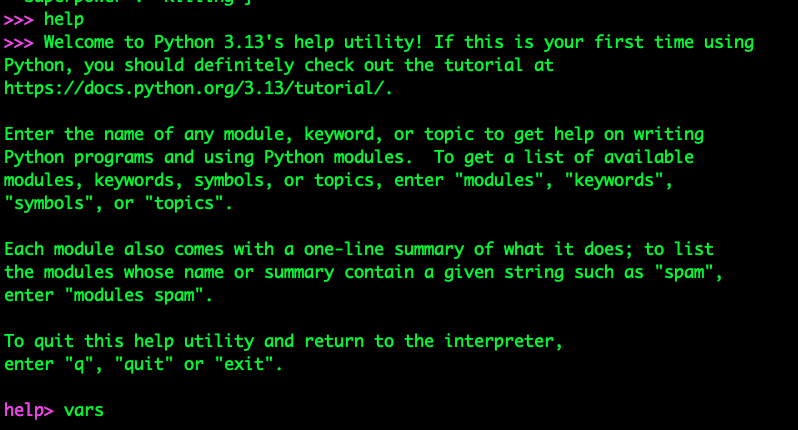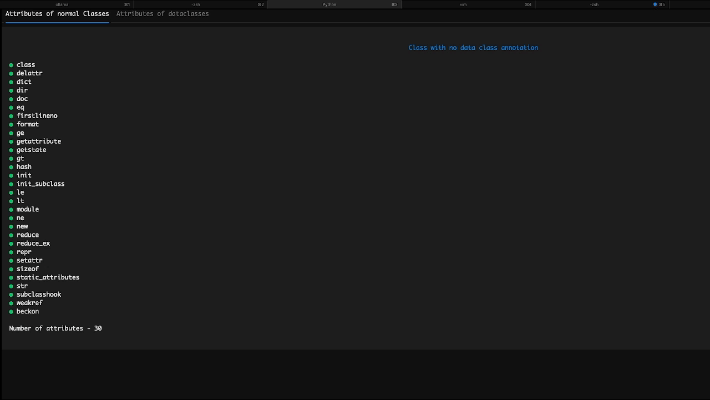19th Nov 2024
I was trying to write an article on Dataclasses1 and I looked up an example on the official website2
Easy enough on the face of it, but it led me into quite a rabbit hole. A dataclass allows for the creation of "special methods" for a class when the annotation @dataclass is sighted.
So if I have a class "Superhero" with the annotation :
@dataclass
class Superhero:
"""
A class of superheroes and properties about their appearance
in Marvel movies
"""
name: str
superpower: str
appearances: int = 0
def beckon(self):
print(f"{self.name} with the super power - {self.superpower} has appeared in Marvel movies {self.appearances} times")
superhero = Superhero("Aquaman","Underwater breathing",2)
superhero.beckon()
It effectively means that :
The __init__ function, __repr__ function and many more are created for it automatically.
Here's something cool though.
I created one more function without dataclasses -
class Superhero_nodc():
"""
A class of superheroes and properties about their appearance
in Marvel movies
"""
def __init__(self, name, superpower,appearances=0):
self.name = name
self.superpower = superpower
self.appearances = appearances
def beckon(self):
print(f"{self.name} with the super power - {self.superpower} has appeared in Marvel movies {self.appearances} times")
Now when I check the attributes of each of these classes using -
attributes_dc = dir(Superhero)
attributes_nodc = dir(Superhero_nodc)
As a result of understanding what dataclasses do, seeing that the following were the attributes for Superhero wasn't surprising -
['__add__', '__class__', '__class_getitem__', '__contains__', '__delattr__', '__delitem__', '__dir__', '__doc__', '__eq__', '__format__', '__ge__', '__getattribute__', '__getitem__', '__getstate__', '__gt__', '__hash__', '__iadd__', '__imul__', '__init__', '__init_subclass__', '__iter__', '__le__', '__len__', '__lt__', '__mul__', '__ne__', '__new__', '__reduce__', '__reduce_ex__', '__repr__', '__reversed__', '__rmul__', '__setattr__', '__setitem__', '__sizeof__', '__str__', '__subclasshook__', 'append', 'clear', 'copy', 'count', 'extend', 'index', 'insert', 'pop', 'remove', 'reverse', 'sort']
But when we try to see what the attributes of the vanilla class Superhero_nodc are versus Superhero
>>> from pprint import pprint # For pretty printing
>>> pprint([i for i in attr_dc if i not in attr_nodc])
['__annotations__',
'__dataclass_fields__',
'__dataclass_params__',
'__match_args__',
'__replace__',
'appearances']
The dataclass fields and params are understandable and I will look into why annotations and __replace__ show up, but the thing that caught my attention was the presence of appearances .
Turns out that the default values set during definition of a dataclass end up manifesting as class attributes and thereby populate the __dict__ of the class.
Hence it shows up when dir is called.
I also learnt about the interactive Help that the Python REPL offers along the way -

Also here's a neat little experiment I ended up doing - Comparing the attributes for a dataclass and a regular class using tabs in Textual3 !
